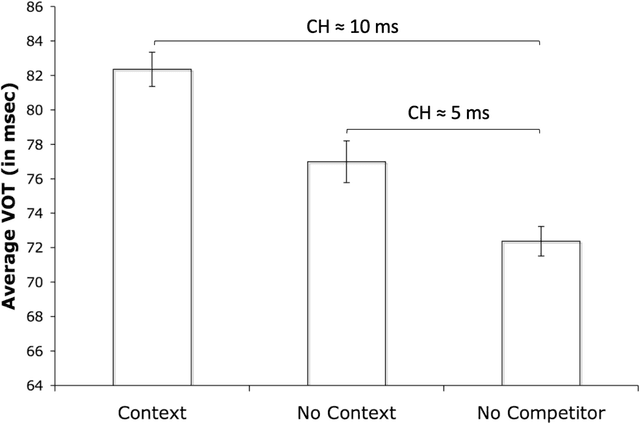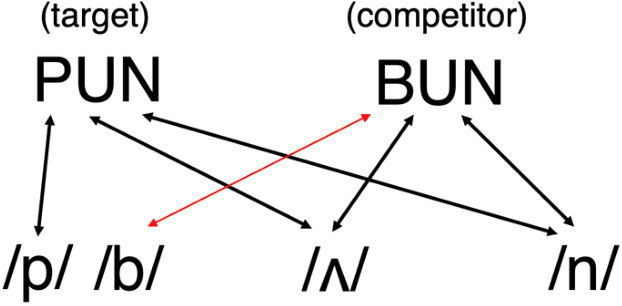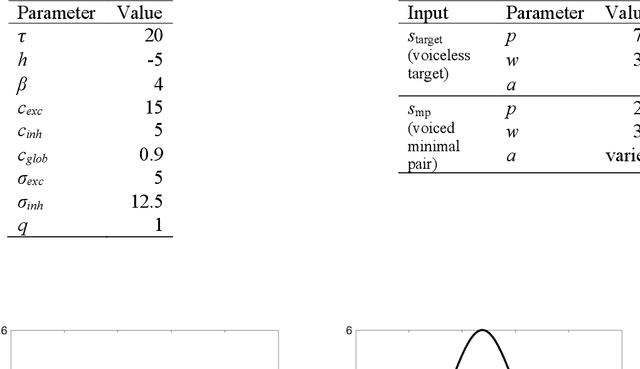Jason A. Shaw
Nonlinear second-order dynamics describe labial constriction trajectories across languages and contexts
Oct 10, 2024Abstract:We investigate the dynamics of labial constriction trajectories during the production of /b/ and /m/ in English and Mandarin. We find that, across languages and contexts, the ratio of instantaneous displacement to instantaneous velocity generally follows an exponential decay curve from movement onset to movement offset. We formalize this empirical discovery in a differential equation and, in combination with an assumption of point attractor dynamics, derive a nonlinear second-order dynamical system describing labial constriction trajectories. The equation has only two parameters, T and r. T corresponds to the target state and r corresponds to movement rapidity. Thus, each of the parameters corresponds to a phonetically relevant dimension of control. Nonlinear regression demonstrates that the model provides excellent fits to individual movement trajectories. Moreover, trajectories simulated from the model qualitatively match empirical trajectories, and capture key kinematic variables like duration, peak velocity, and time to achieve peak velocity. The model constitutes a proposal for the dynamics of individual articulatory movements, and thus offers a novel foundation from which to understand additional influences on articulatory kinematics like prosody, inter-movement coordination, and stochastic noise.
Russian assimilatory palatalization is incomplete neutralization
Jun 22, 2023



Abstract:Incomplete neutralization refers to phonetic traces of underlying contrasts in phonologically neutralizing contexts. The present study examines one such context: Russian assimilatory palatalization in C+j sequences. Russian contrasts plain and palatalized consonants, with the plain consonants having a secondary articulation involving retraction of the tongue dorsum (velarization/uvularization). However, Russian also has stop-glide sequences that form near-minimal pairs with palatalized stops. In the environment preceding palatal glides, the contrast between palatalized and plain consonants is neutralized, due to the palatalization of the plain stop (assimilatory palatalization). The purpose of the study is to explore whether the neutralization is complete. To do so, we conducted an electromagnetic articulography (EMA) experiment examining temporal coordination and the spatial position of the tongue body in underlyingly palatalized consonants and those derived from assimilatory palatalization. Articulatory results from four native speakers of Russian revealed that gestures in both conditions are coordinated as complex segments, i.e., they are palatalized consonants. However, there are differences across conditions consistent with the residual presence of a tongue dorsum retraction gesture in the plain obstruents. We conclude that neutralization of the plain-palatal contrast in Russian is incomplete; consonants in the assimilatory palatalization condition exhibit inter-gestural coordination characteristic of palatalized consonants along with residual evidence of an underlying tongue dorsum retraction (velarization/uvularization) gesture.
Neural inhibition during speech planning contributes to contrastive hyperarticulation
Sep 25, 2022



Abstract:Previous work has demonstrated that words are hyperarticulated on dimensions of speech that differentiate them from a minimal pair competitor. This phenomenon has been termed contrastive hyperarticulation (CH). We present a dynamic neural field (DNF) model of voice onset time (VOT) planning that derives CH from an inhibitory influence of the minimal pair competitor during planning. We test some predictions of the model with a novel experiment investigating CH of voiceless stop consonant VOT in pseudowords. The results demonstrate a CH effect in pseudowords, consistent with a basis for the effect in the real-time planning and production of speech. The scope and magnitude of CH in pseudowords was reduced compared to CH in real words, consistent with a role for interactive activation between lexical and phonological levels of planning. We discuss the potential of our model to unify an apparently disparate set of phenomena, from CH to phonological neighborhood effects to phonetic trace effects in speech errors.
Prosody leaks into the memories of words
May 29, 2020



Abstract:The average predictability (aka informativity) of a word in context has been shown to condition word duration (Seyfarth, 2014). All else being equal, words that tend to occur in more predictable environments are shorter than words that tend to occur in less predictable environments. One account of the informativity effect on duration is that the acoustic details of word reduction are stored as part of a word's representation. Other research has argued that predictability effects are tied to prosodic structure in integral ways. With the aim of assessing a potential prosodic basis for informativity effects in speech production, this study extends past work in two directions; it investigated informativity effects in another large language, Mandarin Chinese, and broadened the study beyond word duration to additional acoustic dimensions, pitch and intensity, known to index prosodic prominence. The acoustic information of content words was extracted from a large telephone conversation speech corpus with over 400,000 tokens and 6,000 word types spoken by 1,655 individuals and analyzed for the effect of informativity using frequency statistics estimated from a 431 million word subtitle corpus. Results indicated that words with low informativity have shorter durations, replicating the effect found in English. In addition, informativity had significant effects on maximum pitch and intensity, two phonetic dimensions related to prosodic prominence. Extending this interpretation, these results suggest that informativity is closely linked to prosodic prominence, and that lexical representation of a word includes phonetic details associated with its prosodic prominence. In other words, the lexicon absorbs prosodic influences on speech production.
 Add to Chrome
Add to Chrome Add to Firefox
Add to Firefox Add to Edge
Add to Edge